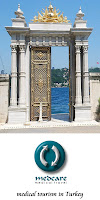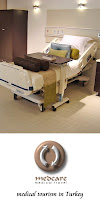Reported across the Arab press was the news that more than 4.3m medical tourists will visit the UAE this year, with the value of the industry projected to jump by 7% in comparison to 2009, according to data released by the government. The UAE is the Middle East’s biggest market for medical tourism. The local sector will be worth $1.7bn in 2010, with the second half alone seeing 13 % growth over the same period last year. Local experts have put these results down to better infrastructure, state-of-the-art medical centres, and modern technology.
But are these figures in any way believable? An analysis of these claims puts these figures in perspective.
- 4.3 million medical tourists would mean UAE attracts a million medical tourists than the combined numbers going to Thailand, India, Singapore, Malaysia, United Kingdom, USA, Poland and Hungary!
- The volume of medical tourism traffic worldwide is estimated at between 38 and 40 million people. This would give the UAE a global market share of 10%.
- There would be nearly as many medical tourists as locals, as the population of all seven states is only 4.6 million (UN, 2009)
- The organization running DHCC says that in 2009 it had 220,000 patients of which 10% were from outside the UAE - and that 10% includes expats and business travelers. So…..the total number of medical tourists is at best 20,000 a year.
- Where are they and their companions staying? According to a review of key cities in the Middle East by research firm STR Global and Deloitte & Touche Middle East, for June 2010; Abu Dhabi hotels notched up the biggest falls in revenue in the region with occupancy levels at 56.9 % and Dubai hotels at 73.1%.
- Where are locals being treated? There is a massive hospital building programme across the region that is struggling to cope with the health needs of a local population. In the UAE, two of Abu Dhabi's biggest projects include the complete refurbishment of both Al Ain and Al Mafraq hospitals, whilst in Dubai, a report by the Chamber of Commerce and Industry anticipates as many as 17 new hospitals providing 2,325 beds will be built in 2010 alone. The increase in demand, expected to hit a massive 165,000 beds by 2025, is partly due to a growing prevalence of Type 2 diabetes and obesity throughout the region, as well as increasing populations and a fresh influx of expatriates.
- According to the World Health Organisation, on 2007 figures there are18.6 hospital beds in the UAE for every 10,000 residents. Even assuming the number of beds has more than doubled since 2007, this would give the country a total of 20,000 hospital beds. Even if we said every hospital bed is occupied by a medical tourist with an average stay of only one day there are only 3.6 million bed days….not enough beds. If the average hospital stay for a medical tourist is five days, then there are a few million beds short. Using Dubai’s figures that only one in ten hospital guests are from overseas, and assuming 3.6 million hospital bed days, and an estimated five day stay, this would mean the number of hospital bed days occupied by medical tourists is only 72,000. Put simply, for the figures to be true, medical travellers would be stacked six to a bed.
- Although widely reported in the Arab press, no government department has either admitted to being the source of the figures or been able to say how they arrived at them.
- The number of tourists to the UAE in 2009 fell slightly because of the economic slowdown, and is only slowly recovering in 2010, say reports by financial analysts Business Monitor International (BMI). But even they cannot check exact figures for Dubai as the authorities refuse to release any tourist arrival figures for 2009 or 2010.
- According to the Department of Tourism and Commerce Marketing (DTCM) Dubai attracted seven million tourists in 2008. Dubai is the main attraction for the UAE, and as figures are stable, these figures would mean that more than one in two tourists to the UAE is a medical traveller.
- Comparing the number of medical tourists with the number of hospital beds is hard, as the Ministry of Health has published no statistics of any kind since 2007.
Sadly, our conclusion has to be that ‘ 4.3 million ‘ is a figment of someone’s promotional imagination. Promoting overblown figures does damage, not just to the credibility of medical tourism in the UAE, but across the world.
The ability for the UAE to compete on price is a matter of concern, as the average cost of heart bypass surgery in the UAE amounts to $44,000. This compares with an average cost of $18,500 in Singapore, $11,000 in Thailand, $10,000 in India and $9,000 in Malaysia. Although the UAE is developing its medical tourism industry region, Asian destinations such as Singapore, India and Thailand are the market leaders for providing medical treatment to foreign patients. Further competition will be forthcoming from other countries seeking to exploit the medical tourism industry such the Philippines, Taiwan and Latin American nations.


















































